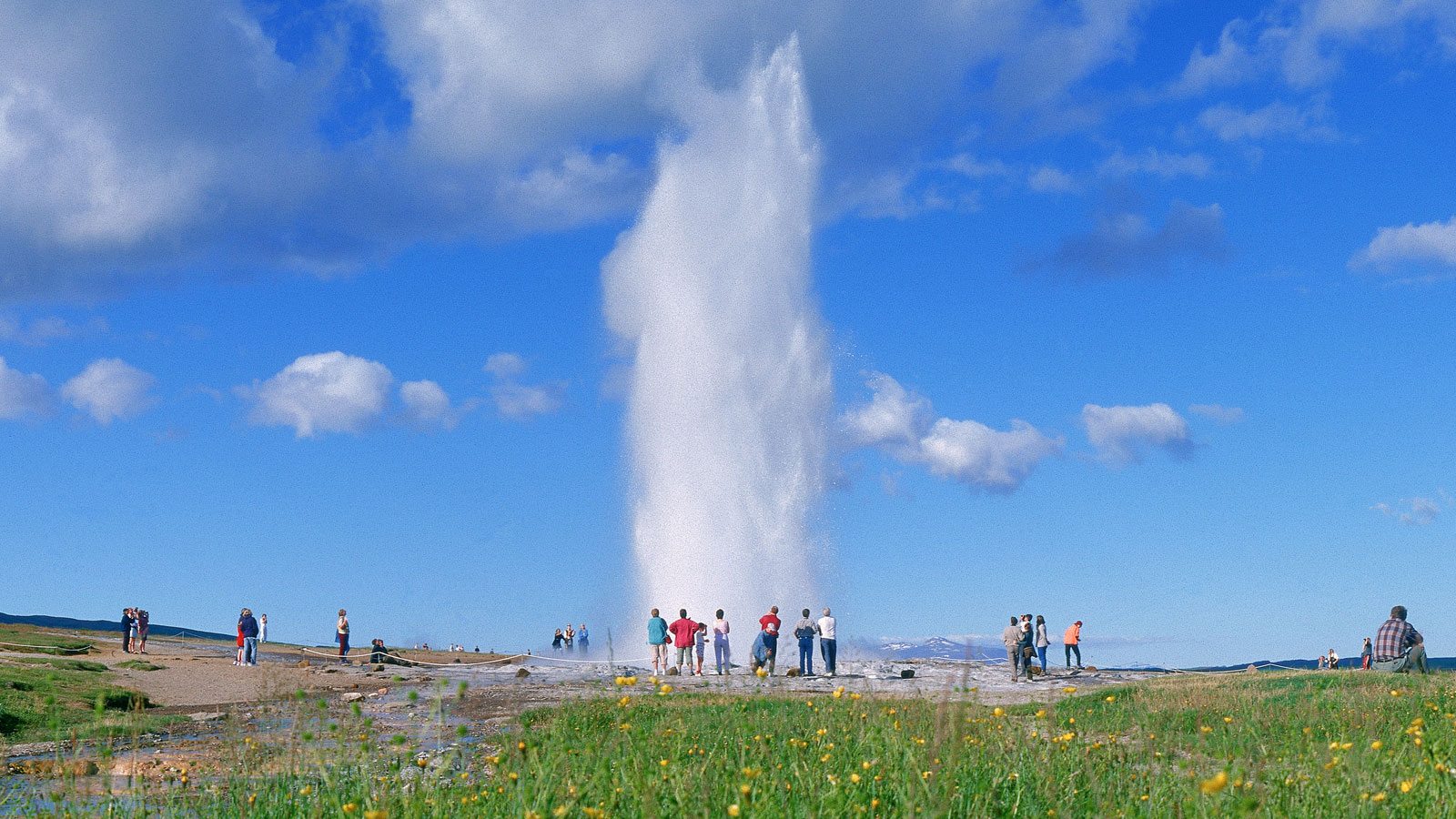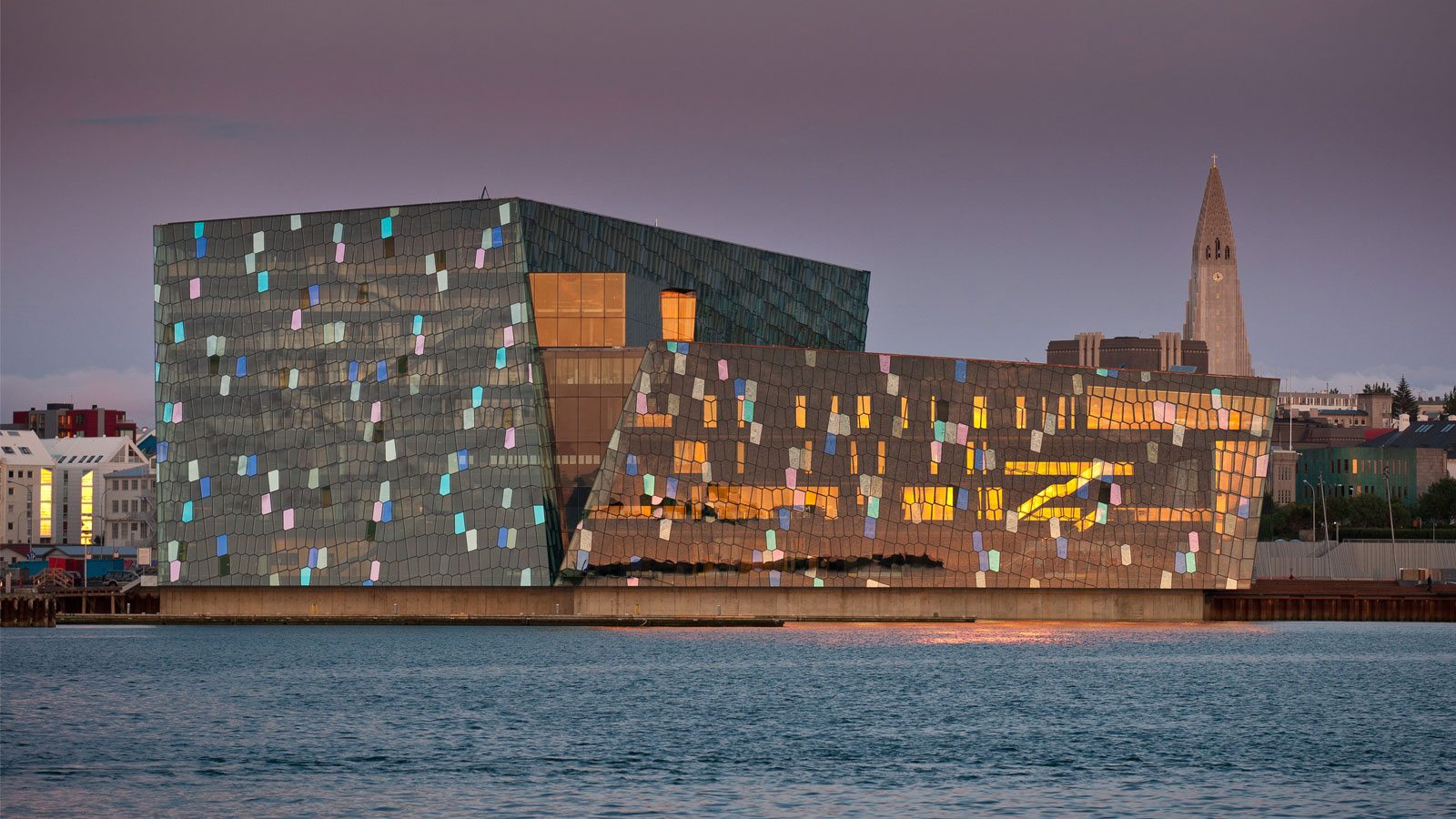With almost 24 hours of daylight for exploring—plus a free layover option with Icelandair—Iceland is the perfect destination for a quick summer stop. Iceland layover
The country notoriously suffered during the global economic downturn in 2008, but has just as famously bounced back, in part because of the successful development of its tourism industry (Iceland hosted more than 1.2 million visitors in 2015). It remains a travel hot spot and is easier than ever to get to from Canada, especially as a pit stop on the way to other European destinations. The only challenge? Deciding what to see, do and taste on a four-day Icelandic layover.
Thankfully, those long summer days give you plenty of time to explore the many lava fields, volcanoes and waterfalls—not to mention restaurants, shops and restaurants—found throughout the country.
DAY ONE
Reykjavik is the obvious place to start exploring. Slightly more than a third of Iceland’s citizens live in its capital city, but that’s only 120,000 people: The city is small enough to discover on foot, but big enough to offer a variety of activities, restaurants and attractions.
Accommodations range from hostels and quaint guesthouses to well-known hotel chains, most of which are located close to the city centre. Icelandair operates several hotels in Reykjavik and elsewhere in Iceland, a fact that can prove convenient when booking your trip with AMA.
After your flight and hotel check-in, it’s time to take advantage of that layover and explore the city. Your first stop should be one of several Bæjarins Beztu Pylsur stands (literally translated: town’s best hot dogs) to eat like a local on the go. Icelanders love their pylsur, or steamed hotdogs made of lamb mixed with beef and pork. It’s common to see long queues in front of the stands during the lunch hour. Order eina með öllu or “one with everything,” including condiments of ketchup, sweet mustard and remoulade, plus raw and crispy fried onions.
While you enjoy your savoury treat, stretch your legs with a wander along the waterfront. Near the old harbour is the city’s crown jewel, the geometric Harpa Reykjavik Concert Hall and Conference Centre. Designed in collaboration with renowned Danish-Icelandic artist Olafur Eliasson and inspired by the Icelandic landscape, Harpa’s exterior is composed of glass panels in multiple sizes and colours to reflect and scatter light; the hall glitters in both the morning and evening sun. You can typically explore the venue on your own or take an hour-long tour for a behind-the-scenes, in-depth look at its design and acoustics. Head back in the evening to experience some of Iceland’s top musical talents.
Free Layover
Spend up to seven nights in Iceland, at no additional airfare, on your way to or from Europe. Visit AMATravel.ca/IcelandVacations for more information.
Other must-see stops are Reykjavik’s 30-plus museums—some of which are free—covering everything from contemporary art and photography to the island’s history and environment. Iceland’s “Land of Fire and Ice” moniker derives from its many glaciers and volcanoes, so a visit to Volcano House is a must. The museum offers insights into the formation of volcanoes, a documentary on famous eruptions and a mineral exhibition.
After learning about Iceland’s very ancient geology, move into the modern era with a stop at Reykjavik’s skyline-dominating Hallgrímskirkja Lutheran church. Designed by architect Guðjón Samúelsson, the striking concrete edifice is inspired by the rectangular basalt-column lava flows found in several areas of the country. For a small fee you can climb to the top of the church’s observation tower and get a 360-degree view of the Reykjavik’s brightly coloured houses, harbour and the mountains beyond.
Getting hungry? Reykjavik’s many top-notch restaurants cater to every taste, though ambitious eaters will want to try some of the country’s unusual delicacies, such as pickled ram’s testicles and boiled sheep’s head. For those with an adventurous palate, try hákarl—fermented shark. A three- to four-month fermentation process allows the meat to decay and cure, removing its toxic concentration of urea; the meat retains a very sharp and tangy ammonia taste. Wash it down with a shot of brennivín, Iceland’s signature clear, unsweetened schnapps.
When it comes to liquor, Icelanders are passionate about their local beer—quite possibly because the brew was banned until just 27 years ago. (Until the ’90s, temperance lobbies successfully argued that cheaper beer would lead to more “depravity.”) Depravity aside, the country now has many craft breweries and bars that serve everything from the always popular Gull lager to darker beers like Viking and Gæðingur stouts.

DAY TWO
Tour companies have made it easy to sightsee right from Reykjavik, with dozens of excursions to countryside glaciers, lava fields and northern lights viewing spots. If you like to journey at your own pace, renting a car might be the best way to experience Iceland’s biggest attractions while retaining the freedom to make spontaneous stops and embark upon side adventures.
Combine history and geology on a day trip along The Golden Circle. It’s one of Iceland’s most popular sightseeing routes and a great way to explore the country. Thingvellir National Park, a UNESCO World Heritage Site, is one of the circuit’s primary attractions. Like all parks in Iceland, admission is free.
Thingvellir houses Thingvallavatn, the largest natural lake in Iceland, along which lies Silfra, the Mid-Atlantic Ridge rift. Here, the North American and Eurasian continental plates are slowly ripping away from each other at a rate of about two centimetres a year. Adventure seekers can get seriously up close to the ridge by snorkeling or scuba diving between the divide. Don’t worry about the water’s frigid temperature: A dry suit with rubber seals prevents water from entering around the neck and wrists. Visibility in the lake is often more than 100 metres, making it easy to see the rift’s dramatic lava and rock gorges. It’s definitely worth the cold plunge to enjoy this truly unique experience.
AMARewards
Learn how one AMA member saved on travel to Reykjavik, Amsterdam and other European destinations.
When back on dry land, remember that the weather here is often very unpredictable and can change quickly. Always carry several layers, including rain gear, and be prepared for sunshine, rain, sleet and a lot of wind throughout the day. With layers in tow, make your way to the Althing, Iceland’s original parliament. The structure dates back to 930 AD and several important historical events have taken place here, including the adoption of Christianity around 1000 AD and the foundation of the modern Icelandic Republic in 1944.
Leaving the park, continue east toward Geysir and Strokkur geothermal area, featuring Iceland’s most famous spouts. The word “geyser” derives its name from Iceland’s Great Geysir—though ironically, this one no longer erupts very often. Strokkur, however, erupts every 10 to 15 minutes; you won’t have to wait long to see its 100°C water shoot up 25 metres in the air. For more fantastic water views, continue east to Gullfoss, one of the country’s most photographed waterfalls due to its stunning two-tiered, 32-metre drop.
After completing the magnificent Golden Circle route, spend the night in Vik, a picturesque town on Iceland’s southern coast. Vik is a very popular destination for exploring Reynisfjara, a black sand beach with three sea stacks visible from shore.
According to Icelandic legend, the stacks—named Skessudrangur, Langhamar and Landdrangur—were once two trolls towing a three-sailed ship back to shore. Before they could reach safety within Reynisfjall mountain, the sun turned the trolls and ship to stone.
Also found along the beach are the basalt columns that inspired Reykjavik’s Hallgrímskirkja church. They form an impressive step pyramid up the cliff face. But be mindul of the waves near the cliffs: They’re forceful and can knock you off your feet or worse—there have been several fatal accidents over the years.

DAY THREE
Not far outside of Vik lies another of Iceland’s black sand beaches at Sólheimasandur. Driving through the sand takes you to the unusual site of a crashed U.S. Navy Douglas Super DC-3 cargo airplane. Abandoned on the beach since 1973, the plane’s fuselage has remained next to the ocean for more than 40 years. Although the exact reason for the DC-3’s downing is unknown, it’s been suggested the plane ran out of fuel after the pilot switched to the wrong tank. Thankfully, all crew members walked away from the crash.
About 200 kilometres east along Highway 1 is the Jökulsárlón glacier lagoon. Here, icebergs calve off of the receding Breiðamerkurjökull glacier and crash into the water at its base. Some icebergs can spend up to five years floating in the 250-metre-deep lake before moving on—via a short river—and slowly drifting out to the Atlantic Ocean. On the beach, the diamond-like icebergs sun themselves on the black sand, rolling in and out with tidal waves. There are boat tours that cruise the lagoon and offer a close-up look at the frozen milky-white and light blue formations. (Ice colour depends on the amount of compressed air bubbles within it and the light refraction on its surface.)
After taking your time to explore and enjoy the unique setting of Jökulsárlón, it’s time to start the return journey to Reykjavik—about 4.5 hours by car. Consider staying outside the city for an opportunity to see the northern lights. Although winter is the best time to view the aurora borealis, Iceland’s high-arctic latitude makes it a great year-round spot to witness the pulsing greens, reds and whites in the night sky.

DAY FOUR
Before you say bless (goodbye) to the countryside, pick up some souvenirs. Try a lopapeysa, Iceland’s ever-popular hand-knit sweaters. The cozy pullovers and cardigans are made using lopi yarn, from the fleece of Icelandic sheep. For real local flavour, pick up a bottle of pylsusinnep, a hot dog topping that’s more than mere mustard. The sweet, brown condiment perfectly accents the weiner’s mix of lamb, beef and pork.
Save the best for last: On your way back to Reykjavik, melt away travel stress in the silica-rich waters of the Blue Lagoon. Since 1976, the geothermal spa has been a popular communal soaking spot for tourists and locals alike. The unique water and silica mud are said to have therapeutic benefits for a variety of ailments. And at 8,700 square metres, with a volume of nine million litres, it’s one of the largest medicinal spas in the world. The lagoon recently expanded to offer a silica mud bar and an enhanced meditative area.
Lagoons, glaciers and geysers are rich introductions to Iceland’s dramatic landscape and legendary history. But they really are just the tip of the iceberg when it comes to discovering the essence of this icy-cool country.
SAVE WITH AMA
City sights: See Reykjavik’s Nordic charm atop a double-decker bus. Hop on/off tour with 12 stops. Save 10% on a day pass.
Watery delights: Book a whale or puffin watching tour, a northern lights cruise or a fishing trip through Elding Adventure at Sea.
Where to stay: Best Western Hotel Reykjavik is steps from the city’s top attractions. Save up to 15% at Best Western hotels in Europe.
Visit AMARewards.ca for more information on these and other savings opportunities. Iceland layover
